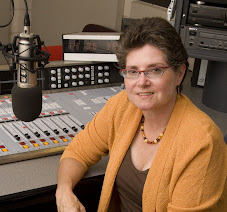What role should religion have in government and policy? What about science? For Toni Van Pelt and her colleagues at the Center for Inquiry, the answer is simple: public policies should be based on scientific evidence, not on faith. As we discuss on this week’s Lincoln Avenue, one of the primary goals of the Center for Inquiry’s Office of Public Policy – and Van Pelt’s primary role there – is to encourage Congress to base laws on objective evidence and to ensure that religion remains truly separate from the state.
In our conversation, Van Pelt mentions a variety of issues, from legislation that allows religious organizations to receive federal funding to provide social services to whether creationism should be part of the school curriculum. Underlying all of this are two core assumptions. One is that faith is suspect. Neither the Center for Inquiry nor Van Pelt herself overtly emphasizes atheism. Instead, they use terms like “naturalism” and “rational ethics.” Yet, as their website suggests, they don’t believe that spirituality and science can fully co-exist. One must either base one’s life on “reason and experience,” or rely on “occult explanations.” To my mind, this creates a false dichotomy. While bringing both faith and reason to the table can be challenging, I see reasonable people doing it every day. I come from a religious tradition that emphasizes critical thinking, argument, and the intention to act in Godly ways. My faith is based on reason and experience, not superstition. In addition, my religious tradition generally refrains from trying to impose our views on others. We don’t think it’s our business to help others see the errors of their ways or to guide them to find the “one true light.” Perhaps because of that, my hackles are always raised when someone tries to tell me that my beliefs are wrong or that theirs is the only truth. And that applies to both believers and skeptics.
That said, the second core assumption of the Center for Inquiry strikes me as essential in a diverse democracy: that public policy should be based on the best evidence and analysis of problems, not on religious faith. Further, I believe that it’s possible and reasonable to advocate for the separation of church and state without denigrating or even excluding religion. The constitution is not anti-religion. Instead, it supports religious choice and diversity, including the choice to reject religion, and the right not to have religion forced upon us. We cannot, I expect, keep people from proposing policies or lobbying on the basis of their beliefs, nor can we keep lawmakers from being influenced by theirs. We can ask that decisions about how our government acts be based on full critical debate about what will work best, and we can insist that such debate consider all of the available evidence. So while I may not fully agree with the Center for Inquiry’s views about the dichotomy between science and faith, I like knowing that Toni Van Pelt is working for public policies based on critical analysis rather than assumptions.
